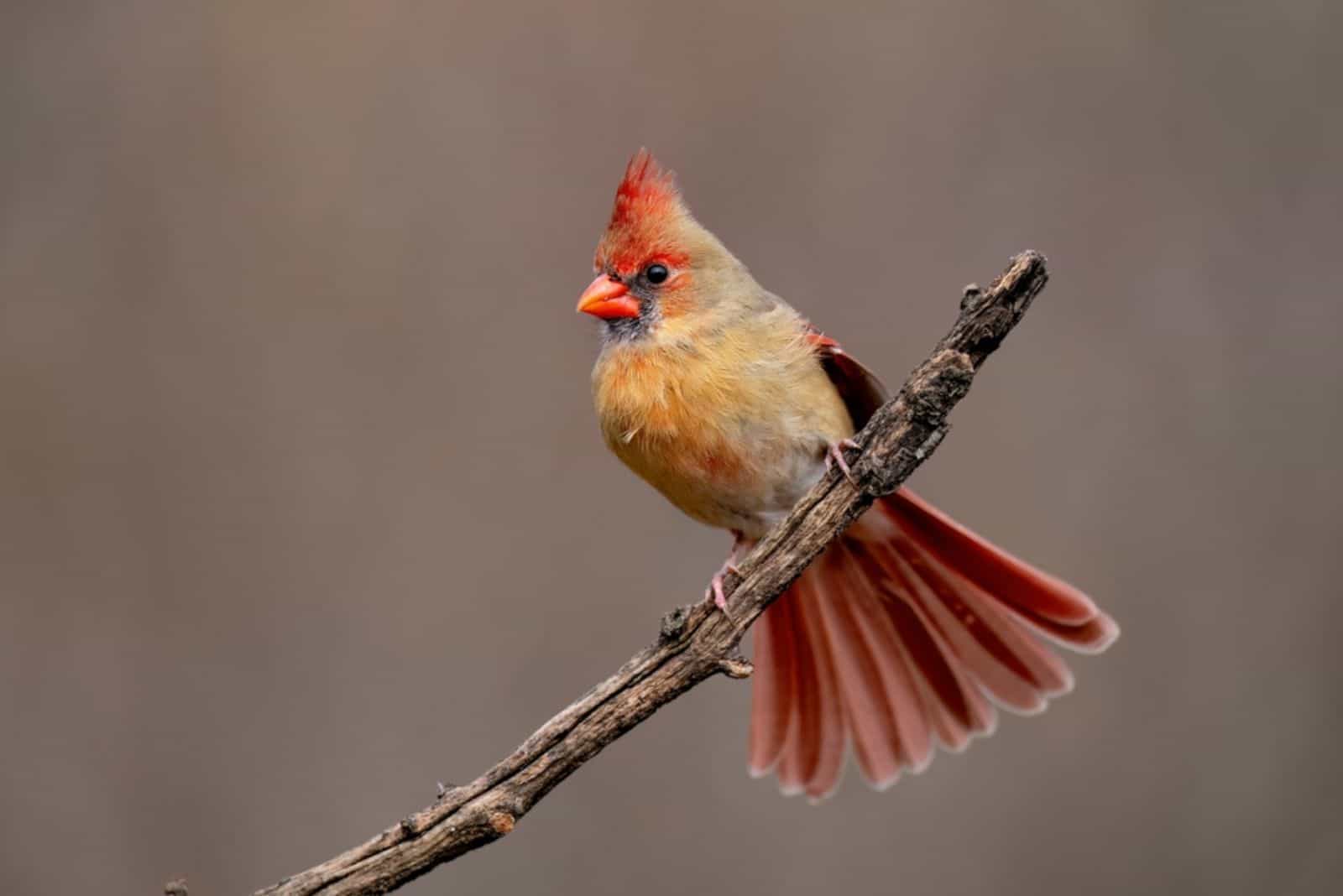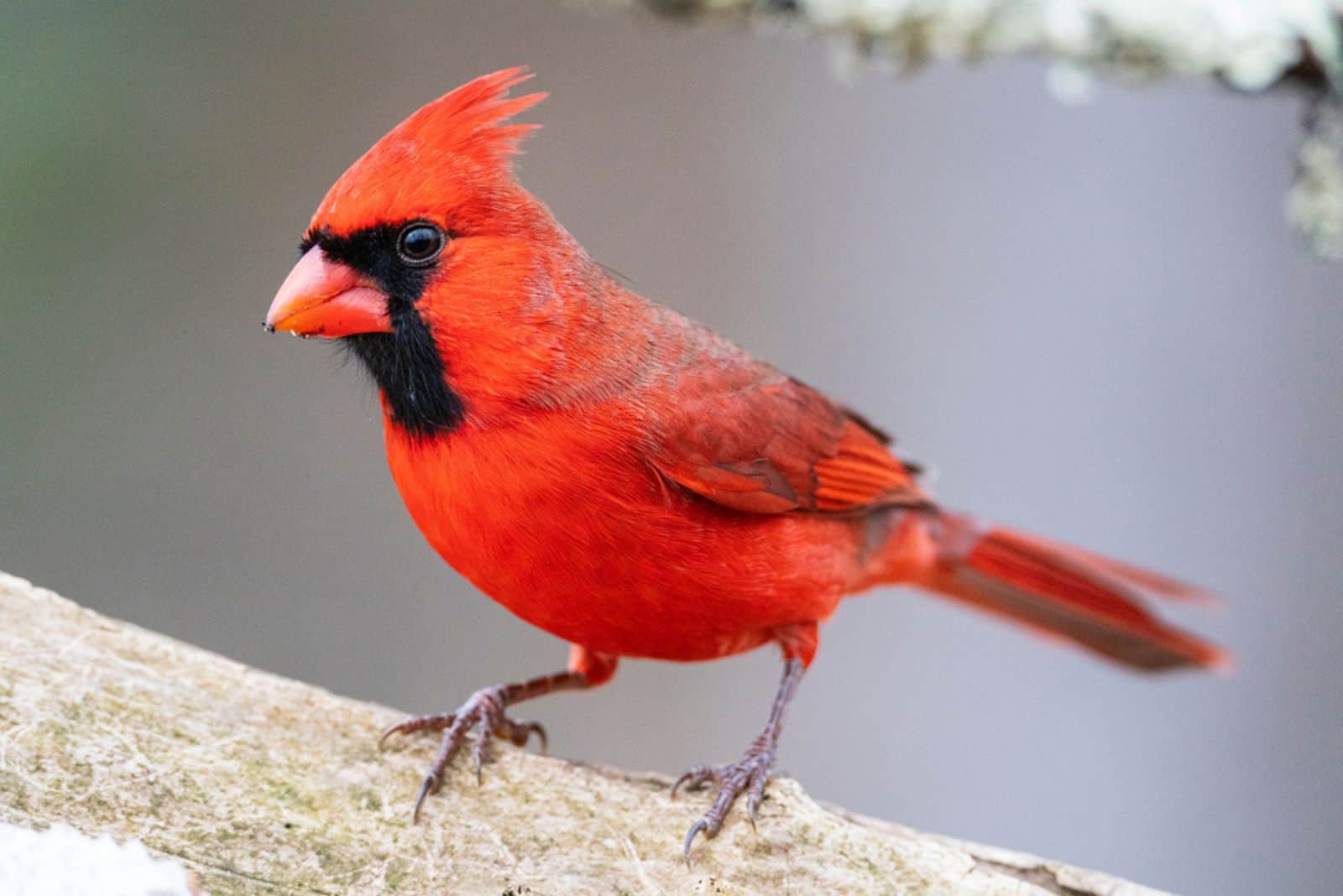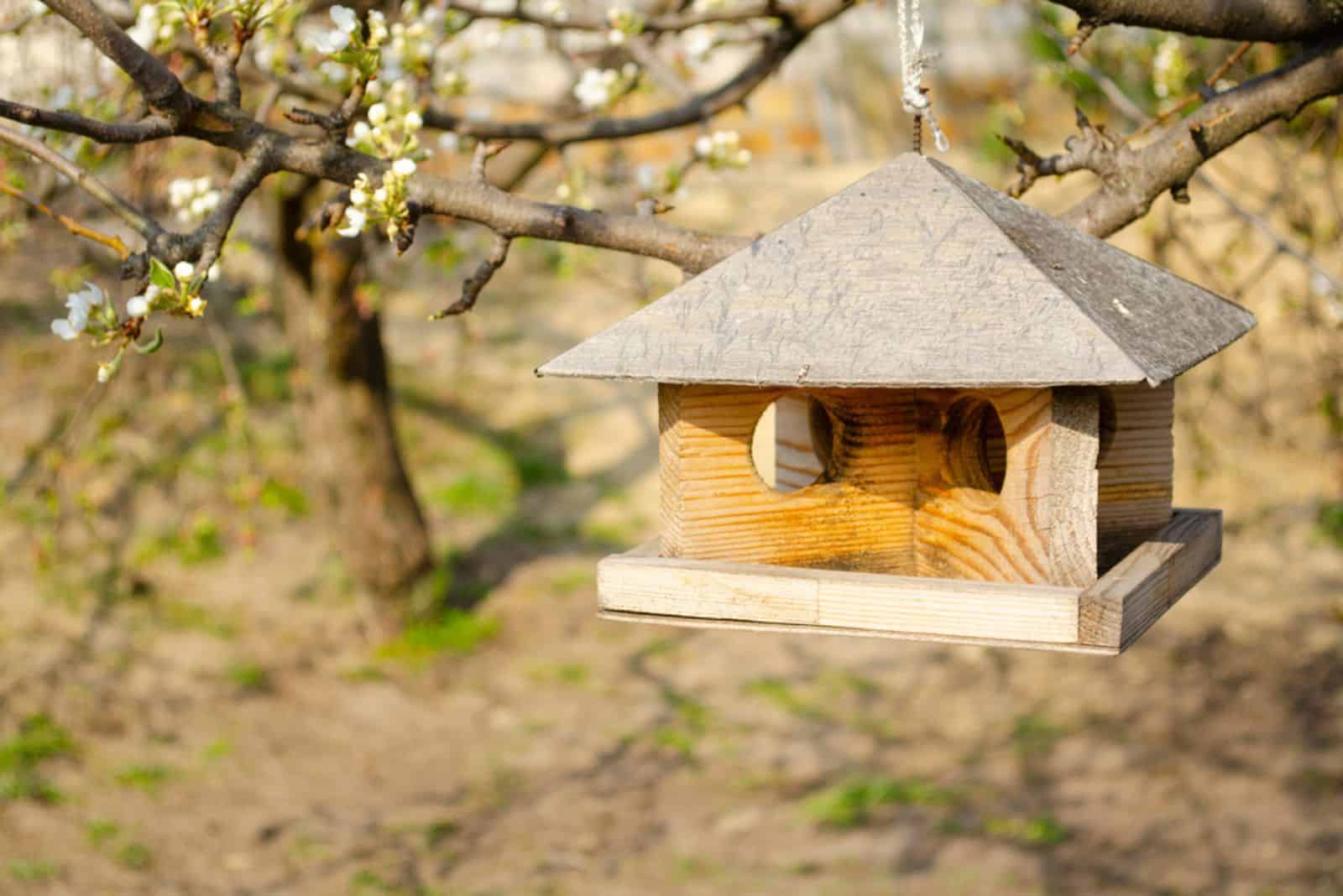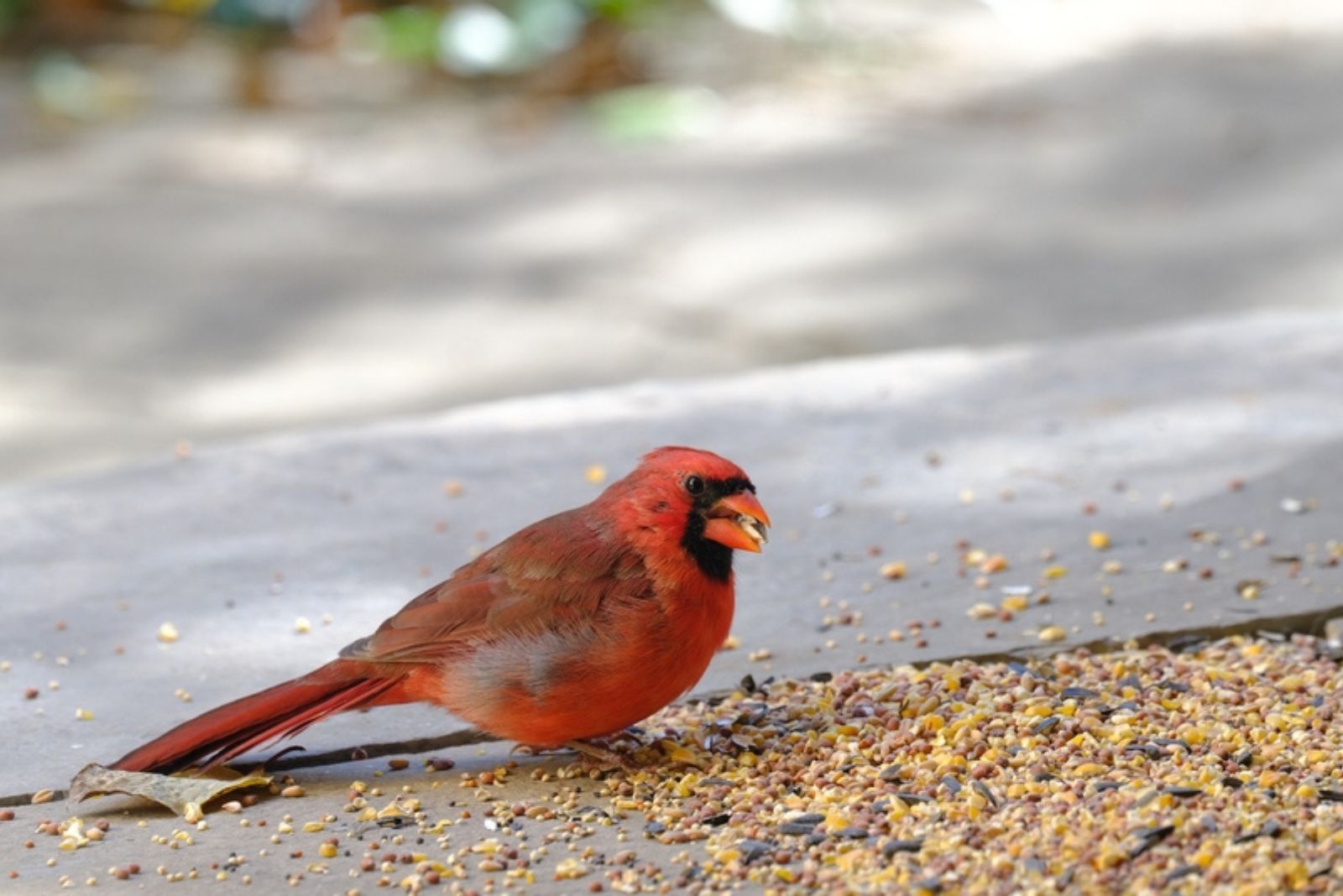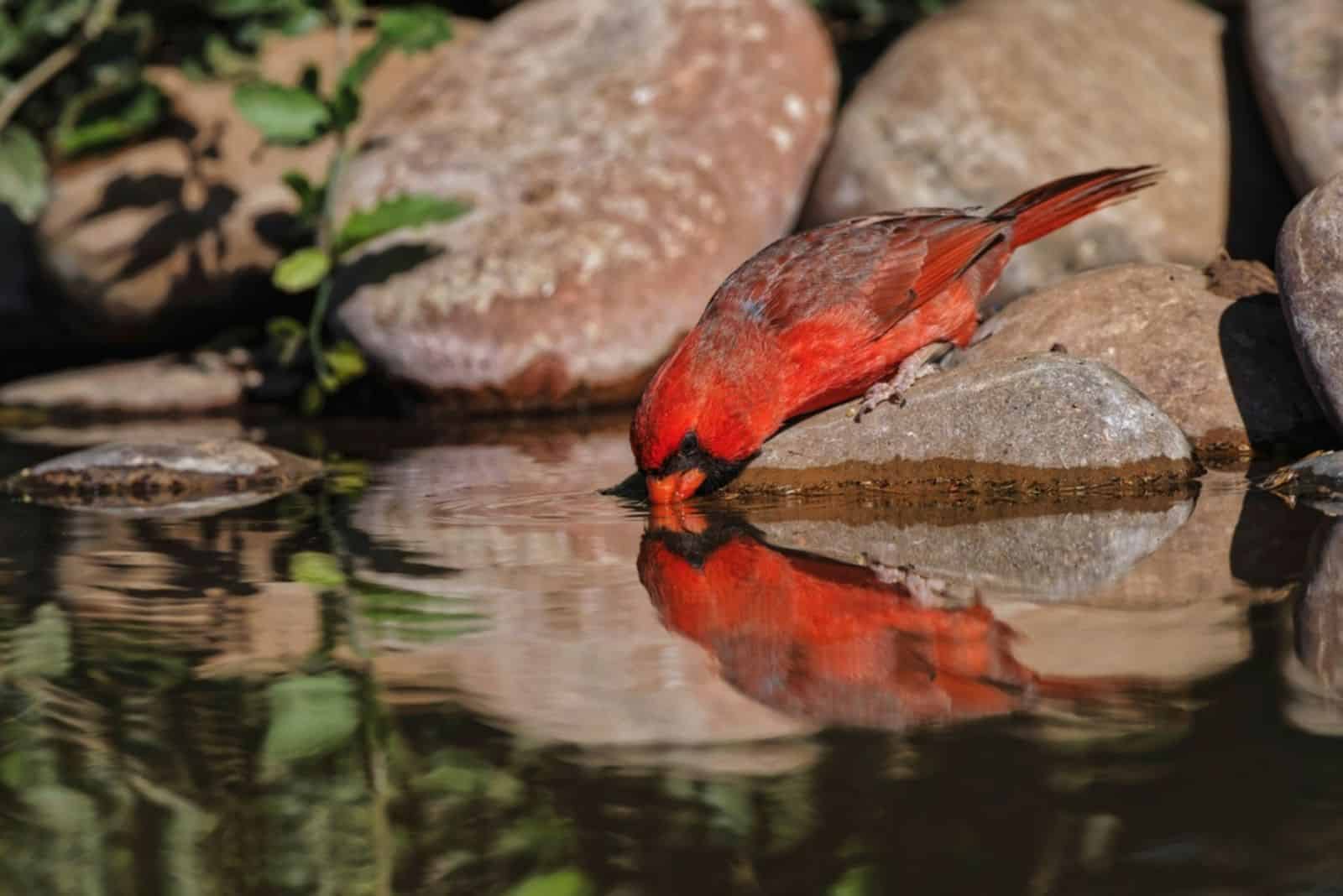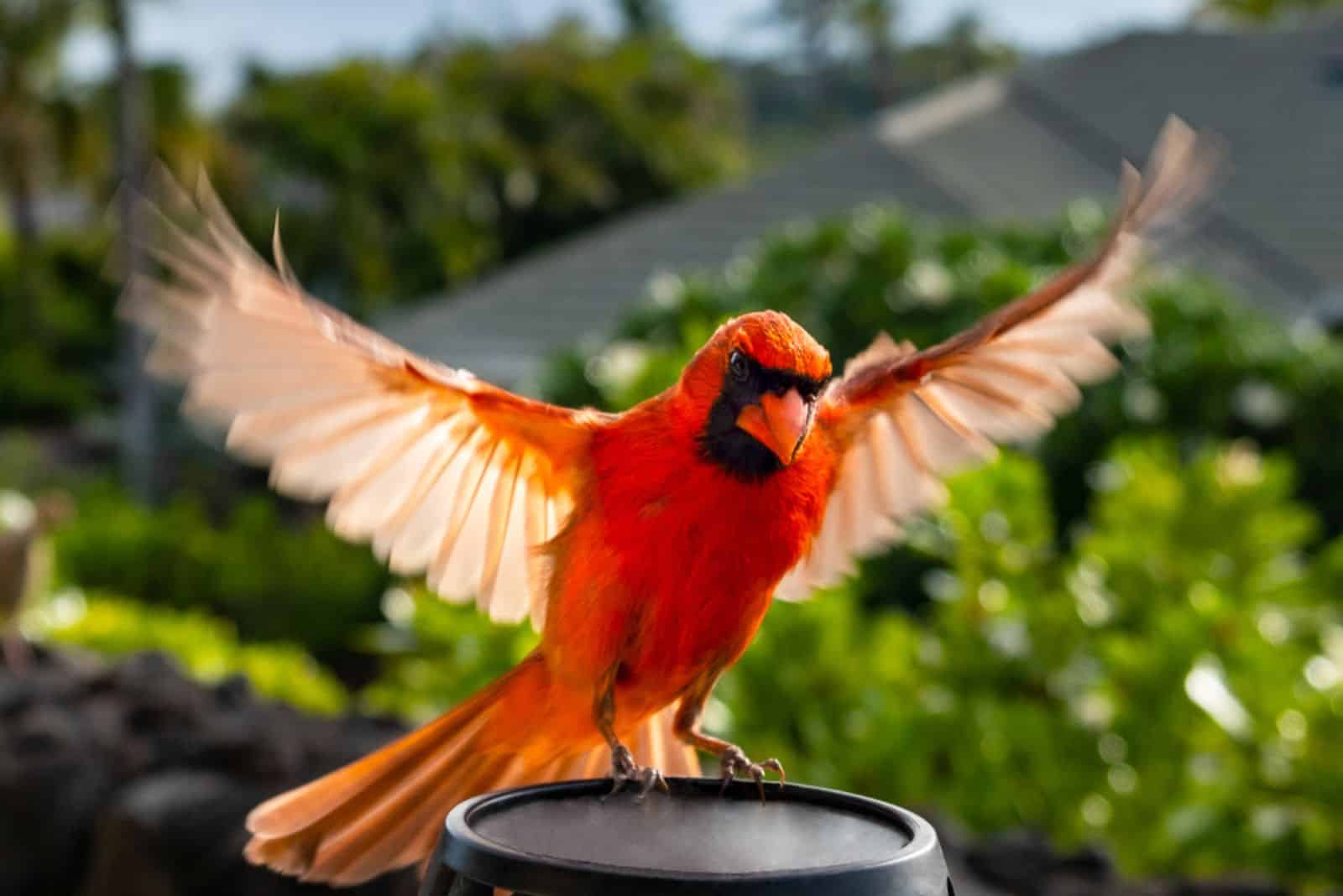As soon as the cool breeze of winter sets in, there’s nothing I find more enjoyable than spotting a bright red cardinal in the yard. With everything covered in snow, these striking birds have a way of adding a touch of color and vibrancy to an otherwise dull winter landscape.
Even if you are not a bird enthusiast, you will still enjoy seeing these adorable birds flying around your garden. Besides, they are quite useful for pest control and pollination!
If you want to turn your backyard into a winter wonderland and enjoy the company of these delightful birds all year round, keep reading to learn everything you need to know about attracting cardinals.
About Cardinals
Cardinals are medium-sized birds that are native to North and South America. There are two cardinal species: the Northern Cardinal (Cardinalis cardinalis) and the Pyrrhuloxia (Cardinalis sinuatus).
We are interested in the Northern one because it is one of the most iconic birds in North America. Known for its bright red plumage, distinctive crest, and black spots around its eyes, the Cardinalis cardinalis is definitely a showstopper!
On the other hand, the Pyyrhuloxia, otherwise known as the Desert Cardinal, can be spotted in the southwestern United States and Mexico. They are quite similar to Northern cardinals in shape and size, though they mostly have grayish-brown colors.
Since these are non-migratory birds, they can stay in your yard all year-round!
Besides their aesthetic appeal, cardinals have a pleasant and melodious song that many people enjoy listening to. They also feed on insects, so they will serve as free pest control in the garden.
How To Attract Cardinals To Your Garden
Even though they have such an intense appearance, these birds are extremely shy. They need to feel safe and secure before settling down in one place.
Luckily, we have been studying their unique behavior for quite some time now, and figured out how to attract them into our gardens.
You will have to provide them with food, fresh water, and a place to stay and rest. We will discuss all this in more detail, so stay tuned!
1. Get The Right Bird Feeder
Before you give them their favorite food, it is important to get the right feeder first. When comparing cardinals to other songbirds, we can conclude that they are significantly bigger.
If you use a small bird feeder that you would commonly use for other songbirds, then cardinals won’t be able to get to their food – they can’t even land on them or flap their wings.
This is why they will quickly get frightened and fly away. Additionally, because they like to see their surroundings, cardinals choose feeders that let them eat while observing their environment.
You should choose feeders with stable ledges so that cardinals can eat facing out.
I would recommend you use feeders that can accommodate numerous cardinals at once. Place them in a wind-free area a bit closer to bushes or trees so that the cardinals can hide and rest.
2. Give Them Their Favorite Food
Since they are quite big, they are able to devour thicker seeds that other birds couldn’t even crack. Sunflower seeds, cracked corn, shelled peanuts,… you name it, these birds eat them all!
They not only favor larger seeds but also adore suet. Just keep in mind to hang suet feeders in a protected area and on a firm surface.
Don’t forget to feed these birds all year round since they don’t migrate. Make sure to keep the feeders nice and clean.
Other foods that cardinals can eat include:
• Raisins
• Safflower seeds
• Berries (blueberries, blackberries, raspberries)
• Apples
• Grapes
• White milo
• Suet
• Nyjer
• Thistle seed
3. Make Sure They Have Fresh Water
It might be challenging to keep a small bird bath filled with fresh water all year long. This is especially difficult if you live in a colder area where the water regularly freezes.
During hot summer days, you might also have to deal with annoying mosquitoes that get into the water – they can be hard to get rid of.
However, if you have enough energy and resources, you can easily provide these birds with fresh water daily. First of all, make sure the bird bath is at least 2-3 inches deep; it’s even better if the water is moving.
The most important thing is keeping the water clean.
Bird baths have a reputation for being bacteria and mosquito breeding sites, so if you can’t keep it clean, then maybe skip giving them water because these birds are great at finding water resources by themselves anyway.
Instead of giving them dirty water filled with bacteria, just let them find water elsewhere.
4. Make Cardinals Feel Safe
We mentioned that making cardinals feel safe and secure is crucial if you want to attract them into your yard. You have to understand that it is in their nature to be skittish, so they will often find different places to hide.
This is why we advise you to place feeders in the branches of trees or along shrub borders. If your yard is bordered by trees, set up a feeder there.
They should be hung low to the ground, near bushes and plants. If you don’t have pets, you can also place a mat or tray beneath the feeders so that extra shy cardinals can ground feed.
Cardinals usually eat in the morning or early evening, so grab your binoculars and admire their beauty!
Consider creating a hedgerow if you’re serious about providing a home for birds in your garden, especially cardinals. If it takes up a little more room than you have available, plant a few dense bushes or trees.
Grow evergreens instead of deciduous trees or shrubs because they will provide shelter even after the season has passed. Deciduous plants lose their leaves, which is no good for cardinals that like to hide behind lush foliage.
5. Create An Inviting Environment
Making a nest for cardinals is usually not recommended because it is important to allow them to build their nests naturally in a safe location. However, there are steps you can take to create a perfect environment for cardinals to build their own nests in your backyard.
First of all, you can provide them with nesting materials close to shrubs or feeders. When it’s time to mate, this will motivate them to create a nest and stay in your yard.
Cardinals like to use twigs, grass, leaves, and other natural materials to build their nests. In addition, string fragments, pet hair from grooming, and hair from your hairbrush can all be placed in an empty suet feeder to help them out.
Avoid including plastic or dryer lint, which can potentially be harmful to these lovely birdies.
If you can find a suitable location, consider placing a nesting box for cardinals. Nesting boxes should be placed in a sheltered location about 5-10 feet off the ground, and away from any potential predators.
Be sure to use a nesting box designed for cardinals, as they have specific size requirements for their nests.
I hope you enjoyed this article.
Until next time!

